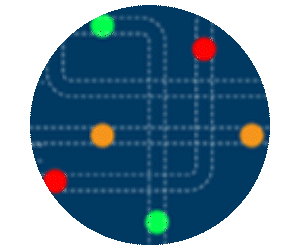Start with a Simple, Short-Term Strategy
Every major IT initiative needs a strategy, and AI is no exception. But some IT professionals hear the word “strategy” and begin thinking about a technology roadmap that spans the next five years. While that perspective certainly has its place, it’s also important to develop a more agile plan around AI that includes short-term, attainable objectives.
As with any technology initiative, you should start with a longer-term goal (for example, three years out) and build short-term milestones that will ultimately allow you to reach that objective. What do you want to accomplish within the first six months to a year? Maybe it’s creating a simple and easily scalable chatbot for real-time citizen interactions. Perhaps it’s developing a basic tool that can solve a very specific problem.
The point is, not everything has to be a monumental challenge or involve grand designs. Consider ways that you can easily and efficiently leverage AI to score some quick yet important wins.
Remember That AI Is Fundamentally Software
It’s easy to get overwhelmed by the all-encompassing promise and power of AI. It does so many things! There are so many use cases! Where and how do I start?
Start by taking a step back and recognizing AI for what it is. Yes, it’s revolutionary software but it is still software. There’s no reason to be intimidated by it. As long as you have the right supporting application platform, you can implement, run, scale and maintain AI just as you can any other type of modern containerized software.
In fact, you probably already have this platform in place. Many agencies are already embracing the concept of an “open by default” infrastructure that allows them to more readily adopt innovative solutions. One reason is that an open infrastructure helps promote collaboration between data scientists and application developers, which is important to successfully creating AI-driven applications.
READ MORE: How can agencies improve citizen services using artificial intelligence?
Acknowledge the Need for Careful Governance
Although AI is software, it differs from traditional software in that it is not static. It adapts, learns and evolves based on the production data it interacts with. Adaptation often happens very quickly. Production application outputs may change based on any given feedback loop, and the AI may begin to operate in unexpected ways. Unlike in traditional software, this isn’t a bug but a feature.
As such, it’s important to put in place governance processes that monitor production AI apps to ensure the outcomes that they produce remain in compliance with state, local and federal regulations. For instance, if a state-run healthcare system wants to reduce the amount of time clinical staff spends on addressing routine patient complaints, it could use AI to perform intake, collect diagnostics, gather patient history records and even authorize common prescriptions. But the AI’s analytical process must be transparent, adhere to local data collection and sharing laws, and be HIPAA compliant.
After all, AI does not have an inherent moral code and cannot distinguish between right and wrong or between biased or unbiased opinions. It’s always going to simply look for the most efficient way to solve a problem. Therefore, we must begin thinking beyond the management and oversight of human workers and traditional rules engine-driven software and start considering ways to govern AI that is not subject to human cognitive processing limitations.
EXPLORE: How can agencies mitigate threats created by AI enhancements?
This starts with putting in place a system that gives full visibility into the history and inner workings of the AI’s processes. Containerized AI software that is built to run on enterprise open-source application platforms provides this visibility by allowing you to observe the full provenance of how an AI was modeled, built, trained, served and retrained. The immutable history provided by an app platform gives unique clarity into how the specific AI version was used to form a recommendation or final decision. You can then review and understand how the AI processed and analyzed the data and prove that its outputs remain within human moral and legal code frameworks.
We are implementing AI to help us achieve greater efficiencies than what we are currently able to reach using human-designed and executed processes. That will require the intentional creation of new governance processes to ensure that those efficiencies do not come at the cost of effective and fair outcomes.
Don’t Sit on the Sidelines
This is an exciting time for state and local governments and AI. We are at the beginning of an inflection point, with new technologies that will inevitably change government efficiency and your agency’s ability to interact with citizens in new and more personalized ways. If you hesitate to invest in AI now, you risk getting left behind and failing to deliver the experiences your citizens, residents and visitors will expect.
Fortunately, there’s little reason to sit on the sidelines. By approaching AI in an iterative manner and putting in place the proper governance measures, you’ll be able to create a baseline for successful AI implementation that will serve you well in the months and years ahead.











